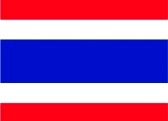All Categories
Shiva (Natraj) - Brass Statue - Made in India (8
Share Tweet
*Price and Stocks may change without prior notice
*Packaging of actual item may differ from photo shown
- Electrical items MAY be 110 volts.
- 7 Day Return Policy
- All products are genuine and original








About Shiva (Natraj) - Brass Statue - Made In India
# These Dancing Shiva Statues depict the Hindu God of Destruction in a cosmic dance of energy; # it is said that the energy Shiva provides when he dances is what sustains that universe. # When Shiva tires of dancing and stops, the universe will lose its energy and will dissolve. # In this statue you can clearly see Lord Shiva standing on a demon with one foot, while another leg is raised and the left arm crosses in front of Shiva's body in a posture of Power. # If you watch traditional Indian dance, such as Kathak, you will notice that this Dancing Shiva pose is replicated in many of their dance moves. Creation["Srishti"]: Upper right hand has a small hourglass shaped drum [Damaru]. It creates Primal Sound that initiates cycles of creation. Destruction ["Samhara"]: Upper left hand holds a blazing flame [Agni], symbolizing His power of destruction, "Samhara". The way both creation and destruction are held in the dance pose signifies that ultimately Shiva is responsible for the balance. Preservation ["Sthiti"]: The right hand is raised in a gesture that suggests protection of devotees and follower of righteousness [Dharma]. Emancipation/ release ["Anugraha"]: The lower left hand points to the left raised foot, a gesture signifying Upliftment and Salvation [Moksha]. lllusion ["Tirobhava"]: Nataraja dances with His right foot on a dwarf, said to depict the demon Apasmara Purusha, or the personification of the dichotomy of illusion and ignorance, over which Lord Shiva [Nataraja] triumphs The dance is a pictorial allegory of the five principal manifestations of eternal energy: "Shrishti" - creation, evolution "Sthiti" - preservation, support "Samhara" - destruction, evolution "Tirobhava" - illusion






















